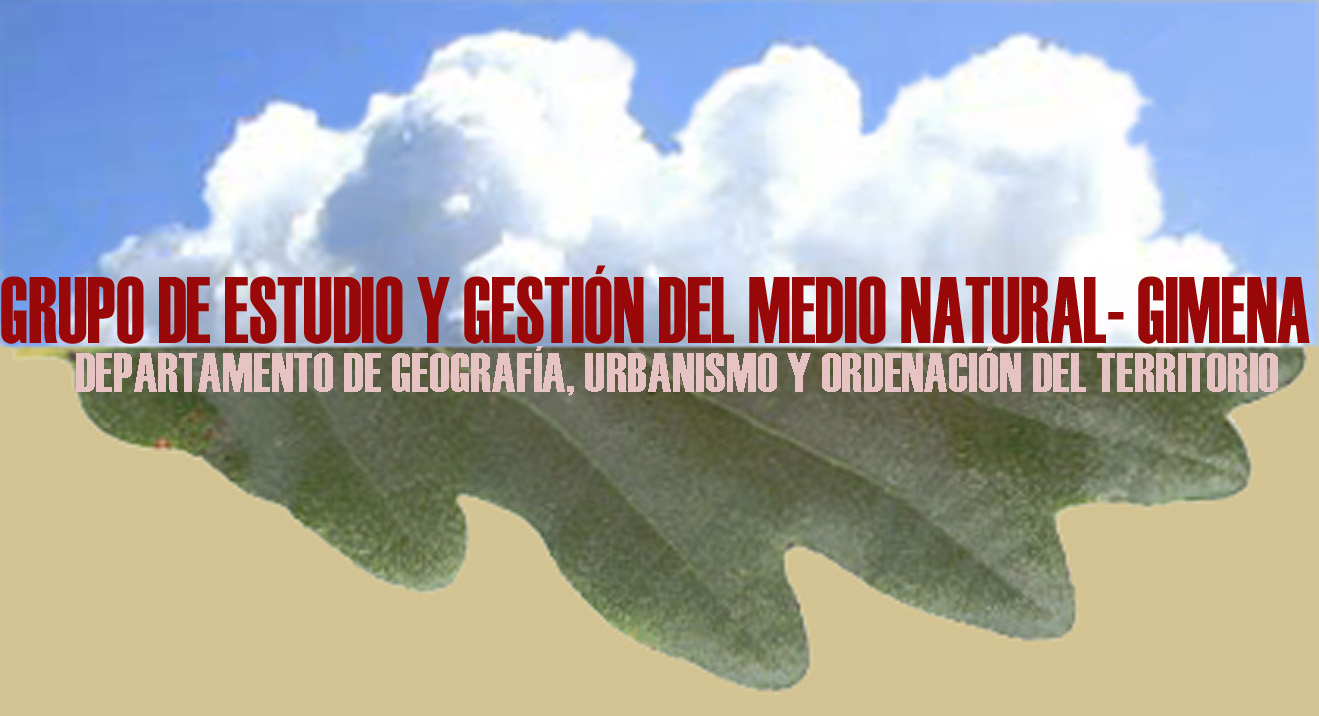
Research group
Department of Geography, Urban Studies and Land Planning- University of Cantabria (Spain)
MAIN PAGE
MEMBERS
RESEARCH
climatology
forest space, wildfires
natural risks
environmental change
management, landscape, heritage
NEWS
DOWNLOADS

Biogeographical history (Cantabrian Mountains, Central System and Pyrenees): 18000 years on climate and anthropogenic changes on indicative forest species
Subprojects 1
& 2.
ABSTRACT
This coordinated project
aims to provide a better understanding of the forests dynamics in
mountain areas of the northern half of the Iberian Peninsula during the
last 18,000 years. The forest dynamics will be seen in conjunction with
the evolution of the climate and its cycles and with the effects of
human pressure. A comparative study of Historical Biogeography will be
performed taking into account a selection of “areas type“ located in the
Central System, in the Pyrenees and in the Cantabrian Mountain. All
areas have shared, during a large part of the history, similar
exploitation modes (livestock, charcoal making, logging, fires) and
similar environmental stress factors (drought, wet phases) making it
possible the accomplishment of this comparative analysis.
The project, undertaken by an interdisciplinary team of geographers,
biologists and forest engineers, will permit to analyse the similarities
and dissimilarities among the study areas taking into account the
information provided by different categories of indicators and the range
of disciplines of the team. However, considering the available data
within each group from the different records (paleobotanical localities
in the Pyrenees, in the CantabrianMountain and in the Central System),
their reference collections, their background and experience (pollen,
macroremains, etc.) and their relations with foreign laboratories (whom
the assessment is envisaged), the work has been organized into two
specialized subprojects. From them, different but complementary results
are expected.
The main objective of the project is to determine the factors that have
conditioned the development of the mountain forests of the northern half
of the Peninsula over the last millennia. To do so, a special attention
is required on the species that have their European south western limits
in the study areas. They have proved to be sensitive to the climate
change and to the human presence during the Holocene (i.e. Fagus
sylvatica, Pinus nigra, P.uncinata and Abies alba).
The initial hypothesis is as follows: to understand the composition and
the present extension of these species they must be integrated both the
changes in the landscape (as a result of climate change) and
anthropogenic disturbances (due to the use of fire). Likewise, the
selective action on different species throughout the Lateglacial and the
Holocene must be taken into account. To validate the hypothesis, the
work will focus on the following objectives:
1 To analyse the past of P. nigra, P. sylvestris and P. uncinata forests
in the C. System, the C. Mountain and the Pyrenees. This will provide
new information about their distribution areas and will generate a
discussion about their importance in the past as well as their relation
to the climate and human impacts on the territory.
2 To determine the past extension of beech forests in the study areas
providing new information about their origin, their geographical
distribution and their relation to the climate and human action during
the different phases Holocene.
3 To study the past of the Pyrenean fir forests providing new data about
their postglacial migration and their geographical distribution. Their
importance in the past in relation to the climate and to the human
activity will be determined.
4 To evaluate the consequences of forest fires and selective logging in
the study areas as well as to establish common past patterns considering
the climate and the human activity.
